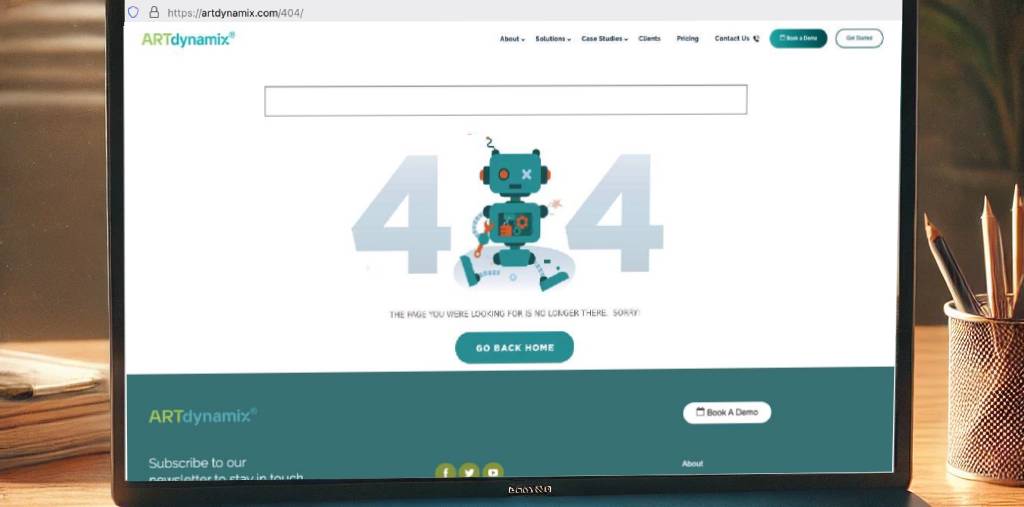About three years ago, we wrote about the role of semantic search in SEO and provided some tips that could help you succeed with semantic SEO. In this latest article, we are taking a deep dive into semantic search and semantic SEO to help you take full advantage of it in the Search-every era.
Key Takeaways
-
-
- Semantic SEO optimizes website content by enhancing its meaning and context in relation to user intent
- Unlike traditional SEO that targets individual keywords, semantic SEO aims to understand the motivation behind search queries
- This approach creates high-quality, relevant content that satisfies audience needs while improving search rankings
- Semantic SEO is essential in today’s Search-every era as search engines have become increasingly sophisticated
- Implementing semantic SEO strategies offers multiple benefits:
- Longer user sessions
- Increased internal linking opportunities
- Enhanced brand authority
- Expanded keyword rankings
- Improved content quality
- Better chances of securing featured snippets
- The core of this approach involves comprehensive topic coverage, natural language optimization, and structured data implementation.
- Proper implementation helps search engines better understand your content’s context and meanin.g
-
The Basics
Semantic SEO optimizes website content by enhancing its meaning and context to user intent. User intent refers to the motivation behind a user’s search query. By aligning content with user intent and wider search queries, semantic SEO improves user experiences and draws potential customers to a site. This approach enables businesses to create high-quality, relevant content that satisfies the needs of their audience.
Target keywords are critical in coordinating content materials with user search motives. Analyzing these keywords helps organizations create content that reaches all related questions and topics, making their approach thorough and highly relevant to content development.
Organizations need to create long-form content, such as comprehensive guides, in-depth articles, or detailed case studies, that provide complete answers to each question related to their subject to accomplish user search goals fully. Search engines better understand content materials when they match user intent and context, especially as voice search grows in importance and users require materials expressed in natural language.
The approach of Semantic SEO involves optimizing website content to achieve better placement and match with search engine result pages. Using word meaning and context enables better user experiences while attracting potential customers to a website. Semantic SEO allows businesses to produce top-notch, relevant content that meets the needs of their audience.
The practice of selecting appropriate keywords matches content with what users are seeking on search engines. Analyzing these keywords helps organizations create content that reaches all related questions and topics, making their approach thorough and highly relevant to content development.
Introduction to Semantic SEO
Unlike traditional SEO, which primarily targets individual keywords, Semantic SEO aims to grasp the user’s intent behind the search. This involves using semantic keywords, latent semantic indexing (LSI) keywords, and structured data to help search engines more effectively understand the content and context of web pages. Traditional SEO focuses on optimizing individual keywords to improve search engine rankings.
Latent semantic indexing, or LSI, is a search tool to understand the relationships between words and concepts on a web page. Instead of just looking for exact keywords, LSI helps search engines recognize words commonly found together and share similar meanings. For example, if a page talks about “apple,” LSI looks for other words like “fruit,” “orchard,” or “nutrition” to understand that it’s about the food, not the tech company. This helps search engines figure out what a page is about, even if it doesn’t repeat the same word.
For content creators, this means writing in a natural, informative way that comprehensively covers a topic rather than stuffing in exact-match keywords. Including related terms and phrases connected to your main topic helps reinforce the subject for search engines and makes the content more useful for readers. When you focus on writing clearly and covering the whole meaning of a topic, you’re already supporting the kind of content LSI is designed to understand and rank better.
Understanding Semantic Search
Semantic search understands the intent and context behind a search query rather than just matching individual keywords. It leverages natural language processing (NLP) and artificial intelligence (AI) to analyze search queries and deliver more relevant results. Unlike traditional search methods, which rely heavily on keyword matching, semantic search considers the relationships between words, phrases, and entities and the user’s search history and location.
By optimizing for semantic search, businesses can improve their search engine rankings, increase their online visibility, and drive more targeted website traffic. Semantic SEO is essential in today’s digital landscape, as search tools like Google and Perplexity are highly sophisticated in their ability to understand natural language and user intent. Semantic SEO is about creating content that addresses the broader context of a topic and uses related keywords and phrases to enhance relevance. Businesses can improve their ranking and provide users with more personalized and accurate search results.
Benefits of Semantic SEO Strategy
-
-
- Elongates the duration of each session on average
- Increases options for internal linking
- Enhances brand credibility and knowledge
- Increases the number of keywords available for organic search
- Improved content standards
- Enhanced opportunity to secure a spot in featured snippets.
-
A comprehensive list of benefits exists for Semantic SEO deployment in websites. Semantic SEO improves website visibility, increases traffic, and improves user experience. This implementation approach provides better keyword targeting and enhanced search results to the user experience. The success of your website ranking requires the essential implementation of tailored keyword strategies, which deliver better results in both ranking and relevance. Your website ranking and user engagement will benefit from implementing Semantic SEO.
Applying semantic SEO with semantic keyword selection takes longer yet produces valuable results. Integrating knowledge graph technologies can further enhance search engine understanding and improve search results.
The comprehensive utilization of Semantic SEO requires content production that targets specific user needs and includes associated keyword terms. It is essential to create detailed content without relying on keyword stuffing. The content optimization approach helps deliver valuable information and search-friendly optimization, which meets current market trends, thus boosting SEO effectiveness and user satisfaction levels.
Boosts the Length of Each User’s Session
One key benefit of semantic SEO is that it can boost the length of each user’s session on a website. By providing more relevant and comprehensive content, businesses can keep users engaged for longer periods, reducing bounce rates and increasing the chances of conversion. When users find all the information they need in one place, they are more likely to stay on the site, explore other pages, and even return in the future.
Businesses can increase user satisfaction and loyalty by focusing on user intent and providing detailed answers to their queries. This enhances the user experience and signals to search engines that the content is valuable, which can improve search engine rankings.
When a reader discovers all the desired information in your article, it encourages them to remain on your website without having to backtrack and continue searching through other search results. Semantic analysis is essential for semantic search, as it helps understand user intent and the context of search queries. Targeting related search queries can help keep users engaged by providing comprehensive information.
This bodes well for both UX and SEO. Furthermore, the user may be captivated by your knowledge and influence on the subject matter, prompting them to peruse more of your material and keep up with future releases. Understanding user intent allows you to create content that fully addresses users’ needs. They may even consider becoming a client if you provide products and services.
Maximizes Potential for Internal Linking Opportunities
The greater the depth and use of related phrases, terms, and LSIs in your article, the more chances you’ll have to incorporate internal links. Understanding search tools improves considerably when you enhance content’s meaning in combination with context, which enables natural connections between various pieces dealing with diverse aspects of a given topic.
Using keyword variations can enhance internal linking opportunities by allowing you to naturally connect different pieces of content that address various aspects of the same topic.
After thoroughly covering the topic of your writing, you can effortlessly incorporate links to other articles you have written on related subjects. Emphasizing semantic understanding in your content creation ensures that your articles are contextually rich and interconnected, which is crucial for modern SEO practices.
The article about “Maximizing Your Blog” successfully explores the topic in depth after you finish writing it effectively.
Your reflection leads you to remember writing the posts titled “Maximizing Meta Descriptions,” “Mastering Featured Snippets,” “Crafting Compelling Headings,” and “Utilizing Keyword Gap Analysis Tools.”
These are all articles available for natural linking in your current post.
Enhances Brand Authority and Knowledge
After producing a hundred pieces on SEO or digital marketing, you’ll inevitably develop a strong understanding of the subject matter. As long as you’re not just churning out subpar material. Incorporating a target keyword alongside semantic keywords can enhance content relevance and optimize for search engines. Understanding users’ intent can help create content that builds brand authority by directly addressing the motivations behind search queries.
To build credibility, one must restrict one’s focus to a few connected subjects while performing in-depth examinations. This approach increases brand credibility and reliability by creating high-quality content that delivers both value and comprehensive explanations.
Visitors rely on Backlinko as their primary source for SEO and marketing insights because the website provides extensive information about each field. Since its inception, the source has established itself as reliable and knowledgeable. As a result, users now turn to it for valuable insights and advice.
Upon encountering Backlinko in a SERP, individuals tend to favor their article over the one ranking above. This is due to the association of Backlinko with top-notch content, which is precisely the image you want your website to convey.
Increasing the Quantity of Keywords for Organic Search Rankings
Enhancing keywords within your content improves SEO effectiveness for organic search visibility. When you use Schema to enhance structured data, Google becomes better equipped to index content accurately.
Before Google’s updates altered the parameters, content optimization centered solely on a single primary keyword.
Your article needs a principal keyword, but it should also obtain rankings for multiple terms incorporated throughout the text. Combining various keyword variations and long-tail phrases improves your content relevance while it targets multiple search intents.
The importance of context has increased significantly, particularly when incorporating LSI (Latent Semantic Indexing) keywords into your writing. These particular “keywords” provide further insights on a topic and are closely connected to your chosen keywords.
LSI can be demonstrated by including terms such as “speech recognition” and “computer vision” in a machine learning article. Although not considered traditional keywords, both phrases enhance the reader’s or bot’s understanding of the context and deepen the topic.
Additionally, leveraging LSIs aids crawlers in comprehending your content when the topic is not discernible from the title. For instance, if your subject is Iron Maiden, is it regarding the band or the torture device? Including terms such as music, heavy metal, and concert will indicate to Google that your topic is the band rather than the torture device.
Improved Content Excellence
Implementing a semantic SEO framework will surely enhance your content’s caliber. Moving beyond focusing solely on just keywords to adopting a more holistic approach marks the essence of this strategy, which avoids superficial discussions. Semantic search SEO helps produce better content by analyzing user needs and text settings to match content with authentic search results.
To give an example, stating that machine learning is the way forward is one perspective. The analysis requires explaining how natural language processing and computer vision support artificial intelligence in making predictions without direct programmer input. One can use your content relevance and keep current search trends in line by using keywords with semantic connections to your subject. Each step of the explanation benefits from including practical instances through real-world examples. Adding discussions about artificial intelligence as a service and chatbots will enhance your content material’s general quality and appeal.
Do you aspire to be among the top performers? The path to success is in your hands. Produce exceptional quality content and comprehensively cover all relevant topics in your field.
Improved Probability of Ranking for Featured Snippets
Your snippet placement depends on ranking first on the SERP. Google’s Knowledge Graph changes search results by showing context-relevant information from search queries, which displays how well Google understands user goals and situations. The creation of detailed and professional content establishes your competence and authority in your field, which helps you achieve a featured snippet online. Understanding user queries can help create content that ranks for featured snippets by ensuring it fully meets user intent and provides detailed, relevant answers.
Achieving a ranking of 0 for a search on “SEO content strategy” will not be feasible if your website primarily focuses on software reviews.
Despite your efforts to write and optimize an article around that keyword, Google will easily detect any manipulative tactics and will most likely rank the article somewhere between positions 60 and 100+, making your efforts futile.
This highlights the necessity of topical authority. In 2024, Google will possess advanced intelligence to determine whom to trust—someone with no prior experience writing about SEO or leading websites with a wealth of content on search engine optimization. Your content will work best when you provide thorough information that matches what users want to find and uses multiple keyword-related topics to deliver better results for users and search engines.
Conducting Keyword Research is Crucial for Semantic SEO Strategies
How does your basic search method differ from finding semantic keywords?
Using the search bar to discover relevant keywords and phrases is crucial. You can access Google Autocomplete suggestions by typing a keyword into the search bar, which helps generate semantic and long-tail keywords for optimizing content.
Learning user search goals improves keyword selection by providing content that matches users’ needs.
You should evaluate multiple queries and keywords instead of only focusing on one result. This means focusing on the topic as a whole and the numerous related queries associated with it. Finding and using relevant semantic keywords helps improve content relevance, making it easier for search engines to understand and rank your content effectively.
Role of Knowledge Graph in Semantic SEO
Search tools use the Knowledge Graph system to connect conceptual meanings between entities and keywords in Semantic SEO operations. Search engines store relational information about various entities within a vast database of the Knowledge Graph. Using schema markup and structured data gives businesses the ability for search engines to decode how their content relates to website entities and broader conceptual frameworks on their site. Organizations that enhance their search results enable search engines to provide results that precisely match user needs. For example, if a user searches for “Apple,” the Knowledge Graph helps determine if the user is searching for information about the fruit, the technology company, or another related entity. By leveraging the Knowledge Graph, businesses can increase their online visibility and drive more targeted website traffic.
Adding Structured Data to Your Content
Having your content include structured data represents a key factor that allows you to optimize semantic search processes. The search engines read structured data markup called schema to interpret content while determining its meaning within its associated network of entities and concepts. A business can achieve better search engine ranking and online visibility with schema markup because it helps search engines obtain additional content information about ratings and prices and user reviews. Implementing structured data creates better content value for businesses through features such as featured snippets and knowledge panels. These elements can drive more targeted traffic and increase user engagement by providing users with relevant answers to their queries quickly. Adding structured data to your content can improve your search engine rankings, increase online visibility, and drive more targeted traffic to your website.
Now, let’s examine a Case.
If writing about personalized content is your goal, consider beginning your keyword research with Google. Google Search utilizes AI and machine learning to deliver relevant and accurate search results. Semantic search engine optimization can enhance content relevance and search rankings by focusing on user intent and the relationships between concepts.
Explore the associated searches found at the bottom of the page, along with the auto-complete and People Also Ask features. Identifying keywords related to your main topic is crucial for effective content strategies. Each of these terms stands on its own and pertains closely to the subject of your topic.
The standard search feature
Inquiring Minds Want to Know:
Semrush and Ahrefs tools supply additional search terms to help your research. Optimizing related search queries helps improve your keyword research because it connects content to essential topics, which leads to higher traffic values. Optimizing content for voice search queries is also crucial, as voice queries tend to be longer and more conversational, requiring natural and descriptive language.
To access a variety of latent semantic indexing terms related to personalized marketing, refer to the “Personalized Marketing” article under this keyword. This resource includes behavioral data, big data, targeted advertising, and more.
Sorting your keywords into related groups improves their organization, allowing you to use them more effectively. Generating content that matches user search purposes helps users interact better with your site and increases its ranking in search results.
Keep using the keywords naturally within your content as you have done traditionally.
Maximizing Content for Semantic SEO
Your semantic SEO strategy needs certain key elements, plus these additional factors.
Your content receives better search results when it shows what users want and when you add detailed background information. Google’s 2013 implementation (Hummingbird) significantly changed natural language comprehension and user intent-based search methods. This transition transformed how the search engine processed conversational queries by enabling better interpretation, which produced results that matched user purposes. You must properly mix related keywords in natural sentences and design your content strategically to allow search tools to understand your page better and rank it.
You must produce detailed articles that follow semantic SEO principles in content creation. A 500-word article will not provide a complete understanding of any topic. Rephrase your content with 2,000 words or more to provide a thorough analysis of any subject. Stick to writing a comprehensive article before expanding it with unnecessary details to reach a word count. Leave the word count for editing once you have finished writing.
Given the increasing popularity of voice search, it’s essential to consider using conversational keywords. Rather than catering solely to search engine algorithms, prioritize using natural language that reflects how people verbally search.
Utilize SEO semantic markup, also known as content markup (HTML), to structure elements on your page, such as headings, navigation, lists, paragraphs, and sections. This allows search engines to comprehend the information presented on your page easily. The < article> tags signal the web browser that all the content inside them falls under the page’s main topic. A single data structure choice can produce two benefits for your website through rich snippet generation, which might increase your site’s CTR. We should integrate LSIs together with semantic keywords in our content. Integrating LSI keywords within your content simultaneously improves your opportunities to rank at the top for specific long-tail keywords.
Conclusion
To maximize your semantic SEO strategy in 2024 and beyond, focus on creating in-depth, comprehensive content that thoroughly covers your topics rather than aiming for arbitrary word counts. With the increasing popularity of voice search, prioritize using conversational keywords and natural language that reflects how people verbally search for information.
Proper implementation of semantic markup (HTML) helps structure your content elements, allowing search engines to comprehend the information on your page easily. Using article tags signals to web browsers that content falls under the page’s main topic, which can generate rich snippets and potentially increase your site’s click-through rate.
The future of SEO lies in understanding context and user intent rather than simply targeting keywords. By integrating latent semantic indexing (LSI) keywords alongside semantic keywords in your content, you’ll improve your chances of ranking for specific long-tail keywords while providing search engines with the contextual clues they need to categorize and rank your content properly. This holistic approach to content creation satisfies search engines and delivers the comprehensive, valuable information users seek.





